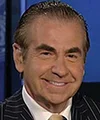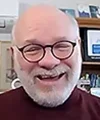Effective leaders live their leadership strengths, whether they’re leading at agencies, corporations, non-profits, in government, or other, and regardless of their organization’s size.
So says Trish Nicolas, EVP of RF Engage, Ruder Finn's Global Center of Excellence for Strategic Internal Communications and Engagement. She should know, because she’s led organizations of all sizes and on both sides of the agency-corporate table.
In our most recent episode of Taking the Lead, Nicolas shares this, her lessons about leading through uncertainty, what leaders should do when they stumble, and how internal communicators should lead through this era of employee disengagement.
Here are excerpts from the full video interview:
You’ve led at corporations, large agencies, small agencies, and now a Center of Excellence of a large agency. What are the most critical leadership rules that have helped you as a leader, regardless of business size?
My father told me when I was taking my first job, he said, be like a sponge and listen before you provide input. And it really stuck with me throughout my life and career. I think also in this experience as leaders, there is often an expectation for us to speak first, and sometimes it's hard not to. However, really listening to our audiences, peers, teams, and the world around us can provide us with a vital perspective as leaders. Second, learn, no matter where we are in our careers, whether it's three days or 30 plus years, we should always be learning from each other, from our peers, from the industry, and from the others to whom we're learning and growing.
What was your worst leadership stumble? How did you recover, and what did you learn?
There’s not really one instance that comes to mind. There's so many careers right? You know, 35 years in, I think as leaders, we should expect to make mistakes, embrace them, stumble all the time, and learn to grow from every stumble.
John Maxwell said, fail early and fail often, but always fail forward. There are two areas that I continue to stumble and seek balance in. One is challenging versus supporting team members. People who have worked with me over the years know that I hold my teams to a very high standard because I just want everybody to step into their full potential.
But I've learned that not everyone grows through challenge, and some people grow better through support, and that's okay. As leaders, I think we have to learn to meet people where they're at and adapt our style to help them grow in the way that's best for them. And that's something that I continue to work on as a leader every day.
What are the most important things leaders must do to lead through uncertainty?
You know, you talk a lot about energy and becoming masters of our energy.
You get a chance to build. It's thinking all those things. Becoming masters of our own energy in times of uncertainty is not always easy, but it's something we have to work on. The impact of having that positive energy and bringing energy to a conversation and to the table can make a huge difference with the people around us.
I want to thank you for reminding us all frequently of the power of positive energy. But there are just a few of the things that I'd add to that. Living through uncertainty is communicating with honesty, supporting with empathy, listening actively, and being calm in the chaos as best you can.
Did you ever have a moment of self-doubt as a leader? If so, how did you get through it?
It’s like how you asked about the biggest stumble, the worst stumble. It's the same kind of thing, like the moment of self-doubt. Being a leader, a strong leader, I think, means questioning yourself regularly. Am I doing the right thing for my organization? Is there a better path forward? What are the options for the situation? What are the ramifications of this decision over that decision?
I think regularly questioning our decisions and our thought process is really human, but it also helps to ensure that we're thinking and acting strategically and leading well. Confidence can be reassuring to the people around us.
If we get too confident, however, we're more inclined to misstep and maybe miss an opportunity to learn and grow as leaders. We have to open ourselves up to self-doubt and even the doubt of others, which can be really, really hard. That balance of confidence and vulnerability is vital to our effectiveness as leaders.
What are the three most important things that leaders in internal comms must know or do to succeed, in this era of employee disengagement, and frighteningly low levels of employee happiness?
There was a chief communications officer survey that came out this summer from Korn Ferry, and it underscored that your internal audiences are viewed as the second most important audience in Gallup. Like you indicated, it shows the global state of the workplace. Our report came out showing 77% of the global workforce is disengaged.
It's imperative that we apply the resources to get internal communications right. It shouldn't be a checklist of recycled tactics, especially when workforces are feeling the weight of the world and often doing more with less. So, I would say strategic internal communications, and hopefully that gives us a little taste of what the difference is.
Number two, is really supporting people, managers, and especially middle management. We know that 89% of middle managers are experiencing burnout, and that's a cry for help. They're being asked to handle a lot, from being experts at their function, but also being leaders, and great communicators. I just read in Harvard Business Review that they're now being asked to be mental health first responders as well.
That's just a lot to carry. So we can't really depend on the Cascades anymore to get information and we've got to go directly to those people, managers in partnership with your functional leadership to support them.
The last one is streamlining. Did you know that humans now have an attention span that is less than a goldfish? A goldfish’s attention span is 9 seconds. Human attention span is now 8 seconds and has declined by about 12 minutes over the past decade, and 43% of employee communications aren’t even seen, they're buried due to the volume of information.
It seems maybe counterintuitive for a communications agency that produces content to say you need to do less. But we need to do less. It's vital for achieving resonance. We've got to be really mindful about it. Our audiences are saturated and they're tuning out. And so we have to be really active stewards of that audience experience.
***
Ken Jacobs is the principal of Jacobs Consulting & Executive Coaching, which empowers PR and communications leaders and executives to breakthrough results via executive coaching, and helps communications agencies achieve their business development, profitability, and client service goals, via consulting and training. You can find him at www.jacobscomm.com, [email protected] @KensViews, or on LinkedIn.


 Fiona Hutton, founder and CEO at Fiona Hutton & Associates, shares her insights as a female entrepreneur on how to overcome analysis by paralysis and how "Type A” executives can be effective leaders on the most recent Taking The Lead video podcast.
Fiona Hutton, founder and CEO at Fiona Hutton & Associates, shares her insights as a female entrepreneur on how to overcome analysis by paralysis and how "Type A” executives can be effective leaders on the most recent Taking The Lead video podcast. While employee inclusion is important for any workplace, three recent examples illustrate how staff empowerment can potentially threaten an organization.
While employee inclusion is important for any workplace, three recent examples illustrate how staff empowerment can potentially threaten an organization. David Barkoe, founder and CEO of Carve Communications, says it’s possible to effectively lead teams, even virtual ones, through any challenge.
David Barkoe, founder and CEO of Carve Communications, says it’s possible to effectively lead teams, even virtual ones, through any challenge. As faith in institutions crumbles and the spread of AI-generated fake news fuels people's mistrust about information, it's time for the PR business to focus on serving the public interest.
As faith in institutions crumbles and the spread of AI-generated fake news fuels people's mistrust about information, it's time for the PR business to focus on serving the public interest.


 Have a comment? Send it to
Have a comment? Send it to 
No comments have been submitted for this story yet.